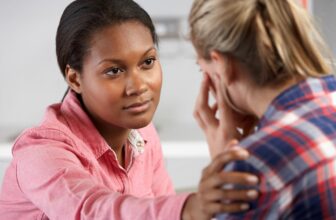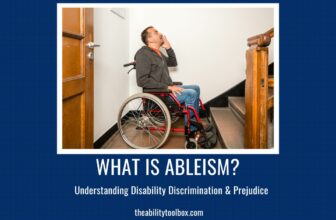
According to the Diagnostic and Statistical Manual of Mental Disorders, about 2% of adults and teens in the US have agoraphobia. Women, young adults, adolescents, and the elderly are more likely to experience the condition than other groups within the population, and those who have experienced trauma are at more risk of developing agoraphobia.
Agoraphobia can affect every element of a person’s life, from their ability to maintain a social life to their capacity to work. In its most severe form, the condition can leave them unable to leave their home at all.
What is agoraphobia?
While most people understand agoraphobia as a general fear of open spaces, it’s actually a much more complex condition. Agoraphobia, in reality, is a fear of being in a situation where escape may be difficult or where help won’t be available if things go wrong.
As well as an overarching fear of being in open spaces, someone struggling with agoraphobia may be scared of leaving home, traveling on public transport, or visiting a shopping center, for example. They may engage in avoidance behaviors, such as being unwilling to leave the house without a friend or partner or ordering supplies online rather than visiting a physical shop. Unfortunately, these behaviors can strengthen the hold of agoraphobia.
Agoraphobia can result in physical symptoms, such as rapid breathing, an accelerated heart rate, feeling nauseous, or feeling hot and sweaty.
How to Manage Agoraphobia
If you struggle with this condition, it may feel overwhelming and as if there is no way to change your feelings. Getting your life back to “normal” may seem impossible. However, it is possible to manage your symptoms to live life more fully again and even to make a complete recovery.
Therapy is an effective way to combat agoraphobia by getting to the root cause of the condition and changing your ways of thinking. A therapist can support you in identifying triggers and gradually challenge habitual modes of thought that may be continuing to drive your agoraphobia. If visiting a therapist in person is difficult due to the nature of your condition or for another reason, you may be able to access therapy online to get the support you need. This type of therapy will typically allow you to participate in sessions online or via telephone.
Cognitive Behavioral Therapy (CBT) is often a good way of tackling the condition. The technique works by helping us to become mindful of our thought patterns and to gradually build up “tolerance” to stressful situations until the anxiety associated with them begins to fade away.
Try Applied Relaxation Therapy
This type of therapy is designed to teach participants how to more effectively relax, meaning they’re less likely to experience the symptoms of agoraphobia (and other panic-related disorders), and can cope better with a panic attack should one crop up.
Applied Relaxation Therapy uses exercises designed to help participants spot the signs of tension, learn how to relax the muscles to release this tension, and use the techniques taught in everyday or stressful situations to prevent tense, panicky feelings from coming to the fore or taking over.
Self-Help Techniques
There are several self-help techniques, too, that you can try to help manage your condition. Agoraphobia may be linked to depression and general anxiety, so making some simple lifestyle changes could make a big difference in how you feel. By ensuring you’re eating a nutritious diet, staying hydrated, undertaking regular exercise, and getting enough sleep, you could notice an alleviation of your symptoms.
What to Do If a Panic Attack Strikes
Knowing what to do in the event of a panic attack can also be reassuring. Should one strike, it’s usually a good idea to stay where you are and try to focus on something you can see that’s not threatening. Alternatively, concentrate on a peaceful visualization and resist any urge to focus on negative thoughts. Don’t fight the attack, which could make things more stressful; instead, accept that, however bad it may feel, the attack is not life-threatening. Take slow, deep breaths until the panic attack passes.
Consider Medication
If you have agoraphobia, it’s important to speak with your healthcare provider to get the support you need. If your condition is severe, your doctor or another health professional may suggest using medication in conjunction with talking therapy to manage your condition and help you deal with the symptoms daily.
Sertraline is commonly prescribed for those struggling with agoraphobia — this medication has proved to be successful in treating this and other mood disorders.
Coping with Agoraphobia: The Key Points
Agoraphobia is a condition that can make patients fearful of places or situations they perceive may be difficult to escape from or where help is difficult to access. Depending on the severity of the condition, there are several ways to help manage the symptoms, including self-help techniques, therapy, and medication.
While agoraphobia may often feel like a debilitating condition, it’s vital to be aware that there is support and effective help available and that the right treatment can significantly alleviate symptoms and even result in a complete recovery.
Photo by cottonbro studio
Follow me down the rabbit hole!
I'm Alice and I live with a dizzying assortment of invisible disabilities, including ADHD and fibromyalgia. I write to raise awareness and end the stigma surrounding mental and chronic illnesses of all kinds.
Dr. Wilson graduated from Rosalind Franklin University of Medicine and Science and completed her residency in Internal Medicine at Advocate Good Shepherd Hospital in Barrington, IL. Dr. Wilson specializes in providing culturally competent and trauma-informed care to patients with physical disabilities. In addition to her private practice, she works as a science communicator, teaching health literacy to middle school and high school students in her local school district.









